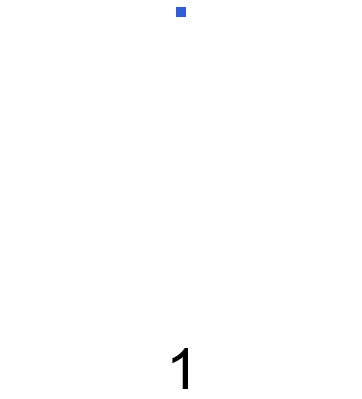介绍
甲五角数(A000326)由公式生成P Ñ = 0.5×(3N 2 -n) 。或者,您可以只计算使用的点数:
您可以使用公式或上面的gif查找前几个五边形数字:
1, 5, 12, 22, 35, 51, 70, 92, 117, 145, 176, 210, 247, 287, 330, 376, 425, 477, etc...
接下来,我们需要计算x个连续数字的总和。
例如,如果x = 4,我们需要查看P n + P n + 1 + P n + 2 + P n + 3(由4个项组成)。如果五角形的总和也是五角形,我们将其称为五角形五角形。
对于x = 4,最小的五边形五边形数是330,它由4个连续的五边形数组成:51, 70, 92, 117。因此,当输入为时4,您的功能程序应输出330。
任务
- 当给出大于1的整数时,输出最小的五边形五边形数。
- 您可以提供功能或程序。
- 注意:对于x = 3没有解决方案。这意味着,如果不能从前10000个五边形中得出一个数字,则必须停止计算并输出最适合您的内容。
- 这是代码高尔夫球,因此,字节数最少的提交将获胜!
测试用例:
Input: 2
Output: 1926 (which comes from 925, 1001)
Input: 3
Output: ?
Input: 4
Output: 330 (which comes from 51, 70, 92, 117)
Input: 5
Output: 44290 (which comes from 8400, 8626, 8855, 9087, 9322)
Input: 6
Output: 651 (which comes from 51, 70, 92, 117, 145, 176)
Input: 7
Output: 287 (which comes from 5, 12, 22, 35, 51, 70, 92)
Input: 8
Output: ?
Input: 9
Output: 12105 (which comes from 1001, 1080, 1162, 1247, 1335, 1426, 1520, 1617, 1717)
Input: 10
Output: ?
也可以给出更大的数字:
Input: 37
Output: 32782
Input: 55
Output: 71349465
Input: 71
Output: 24565290
x = 3,哪个没有解决方案?
9919->496458299155


10001-x